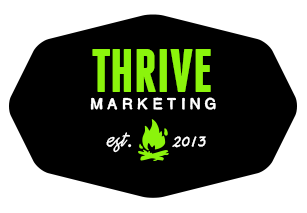How Not to Flop a Marketing Campaign
THE MARKET STRATEGY August 17, 2017 dontmissthrive 0
Creating marketing campaigns means sleepless nights and caffeine hangovers. From brainstorming ideas, to planning, to researching and conductive surveys, it’s already a lot of work and that’s only the beginning.
Once you’ve crafted a marketing campaign, you can’t be sure it’ll push through unless it’s approved by the boss. What if it doesn’t get approved yet? You get to revise and revise and revise and your boss still rejects and rejects and rejects.
And finally, after numerous revisions, rejections and cussing here in there, your marketing campaign is approved! But what’s next? This is the most nerve wracking part – audience reception.
So then you up your marketing campaign through digital and traditional media and then, it flops. Imagine how draining that is. Yes, crafting that has already drained all the creative juices out of you. It’s also a waste of time, budget and energy.
And then moving forward, you’re tasked to create another marketing campaign and you still have your fears and reservations. You’re still traumatized with what happened in the past. What should you do?
How can you not make your marketing campaign flop? Here’s 7 Rules to Foolproof Your Next Marketing Campaign
Rule 1: Pick the right list or targeted demographic.
Nothing else matters if you get this rule wrong. For example, if your product is for men 55 and over and you mail to a list of Cosmopolitan magazine subscribers, the campaign is doomed to fail before it starts.
Rule 2: Tailor copy to your target audience.
If you’re targeting doctors in your marketing and instead of referring to “patients,” you write “customers,” you’ll turn prospects off. It’s critical to write clear copy that is compelling and appealing to your target audience.
Rule 3: Include an offer, but only one.
Every marketing piece should extend an offer or call to action. It could be a discount on purchase or a download your audience would find valuable in exchange for their contact information. Regardless of what the call to action is, it must be singular and clear.
Rule 4: Write copy to the length necessary to sell the benefits and your call to action.
Think people won’t read long copy, either online or offline? It’s simply not true. No one will read it if it’s boring. No one will read it if you approach the wrong audience, either. But if you provide informative, insightful copy to readers who sense that you may have the answers they’re looking for, they’ll read an entire book.
Rule 5: Get your piece opened.
If you are sending via direct mail, give special consideration to the envelope. For example, a colored envelope typically gleans a higher open-rate than a white No. 10 envelope. A live, first-class stamp usually increases open-rates over a bulk-mail imprint. When marketing online, the open rate is your click-through rate. Regardless whether you’re marketing online or offline, your effort will surely flop if no one sees it. Make sure you focus on getting the mailer or email opened.
Rule 6: Don’t ask the media to do all the heavy lifting.
This is a common mistake. Many people think they can simply place an ad and make a sale. While that is possible for some business segments, the majority of sales funnels are not that straightforward. Most of us will place an ad to get a lead or to make a very small initial “buy-in” sale. Expecting a direct mail or online media campaign to sell a $10,000 product is likely asking it to do too much heavy lifting. Plus, it is nearly universally more valuable in the long run to generate leads and then sell the person with a follow-up nurturing campaign.
Rule 7: Follow-up until they buy, die or unsubscribe.
Okay, maybe that’s pushing it a bit, but you get my point. I see so many businesses give up on leads far too early. They spend valuable time and treasure getting potential customers to raise their hands and show interest, but if the prospect doesn’t buy immediately, they quickly give up on the lead. Last year, my company, generated 27% percent of new sales from leads who originally contacted us more than 12 months before. So, our continuous follow-up ended up being worth millions of dollars in new revenue. Tenacity pays.
One last. You can follow all the steps up there, but don’t forget to insert a lot of heart in what you do. Celebrate small wins. If it works, celebrate! If it’s a success, better! But no matter what, do not forget what you’ve gone through to reach this point.

No comments so far.
Be first to leave comment below.